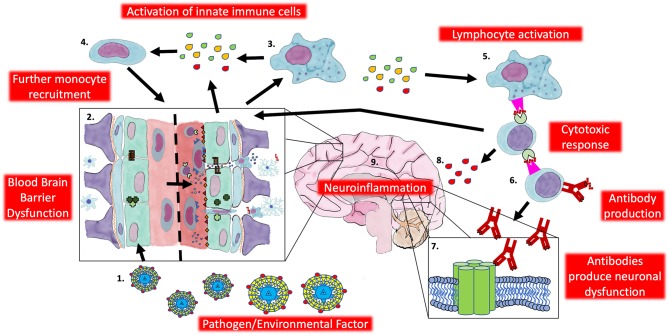Figure 2.
Potential innate contribution to the pathogenesis of autoimmune encephalitis. 1. An exogenous factor (i.e., herpesvirus) infiltrates the CNS resulting in 2. blood brain barrier dysfunction and infiltration of innate and adaptive cells. 3. Activated innate cells (i.e., Macrophages and microglia) release pro-inflammatory cytokines (IL-1β, TNF-α, Interferon-γ) and chemokines (CCL2) to 4. recruit more innate cells and contribute further to BBB dysfunction. Pro-inflammatory cytokines and chemokines also recruit lymphocytes and innate cells act as 5. antigen presenting cells to activate T cells and initiate a specific response against neuronal antigens. 6. T cells interact and activate B cells to produce an antibody response 7. directed against neuronal targets resulting in neuronal dysfunction while 8. directing a cytotoxic response against neuronal tissue (and contributing to the pro-inflammatory cascade) resulting in 9. neuroinflammation. CNS, Central nervous system; IL-1β, Interleukin-1β; TNF-α, Tumor necrosis factor-α; CCL2, C-C motif chemokine ligand 2; BBB: Blood brain barrier.

